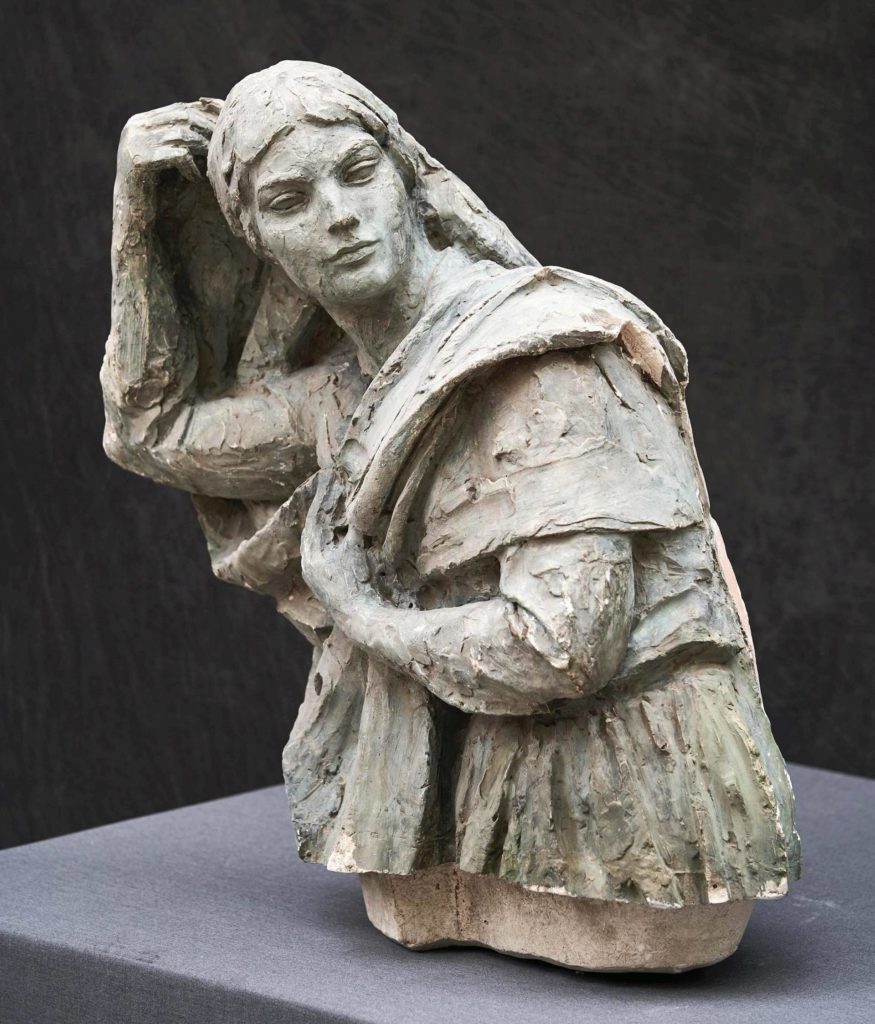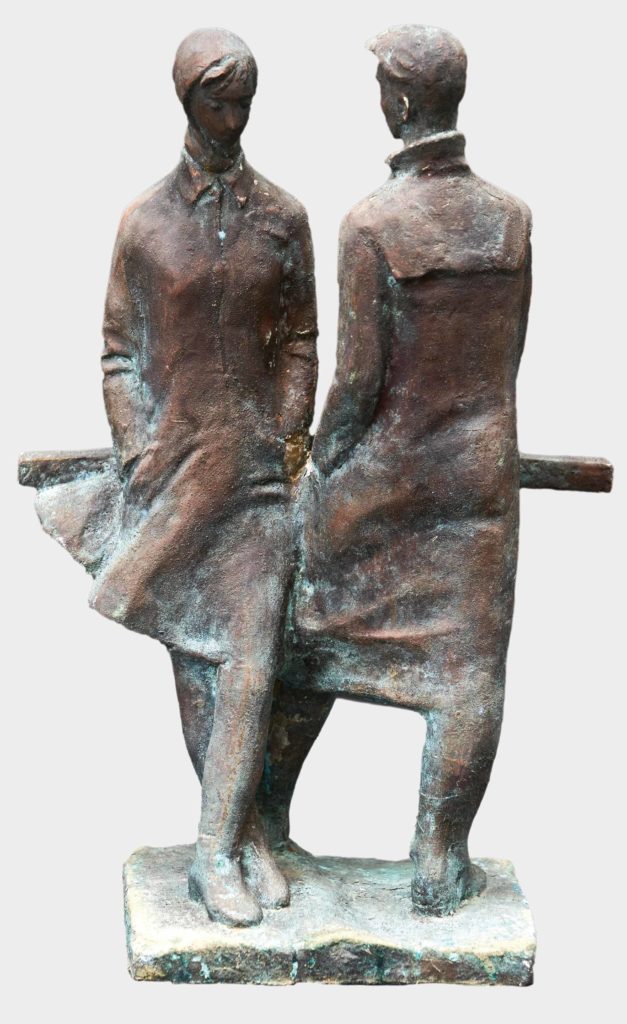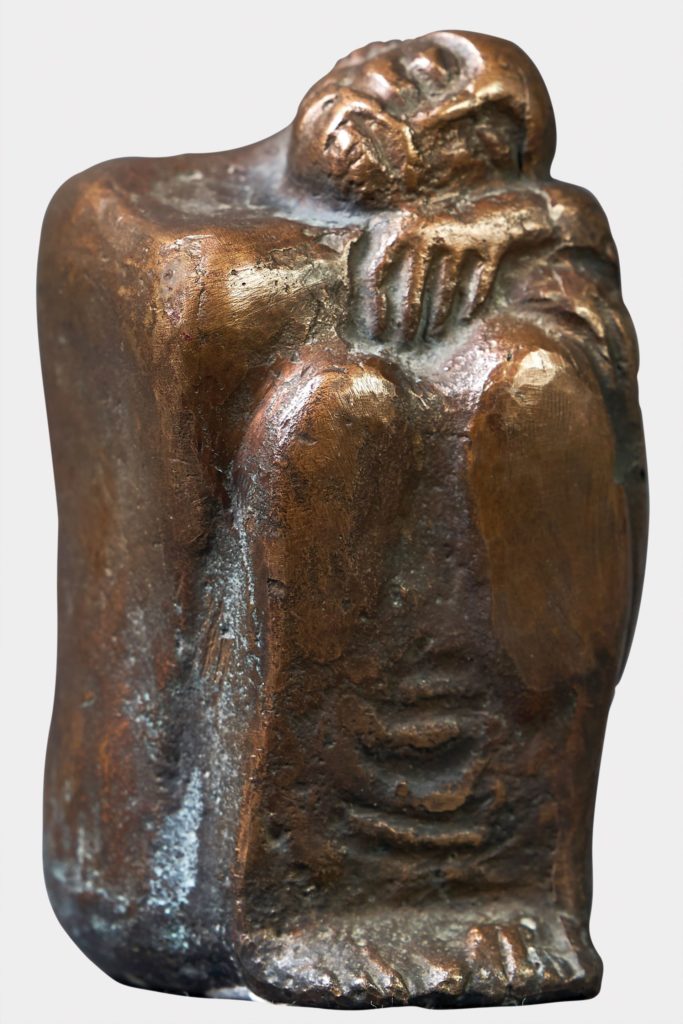In addition to specific facts of history, events that have fundamentally changed the fate of our country, our nation, a huge place in our “historical memory” is occupied by images of representatives of the “spiritual history” of Azerbaijan. These are the artists, scientists, poets, musicians, whose heritage rightfully belongs to world history today and is the property of world culture. It is hard to overestimate the practice that started in the 1940s: to hold the competitions at the state level for the creation of the images of the great Azerbaijani poets of the past – Nizami, Nasimi, Vagif, etc. The Gallery’s collection contains the sculptural portraits of Azerbaijani poetesses Mahsati Ganjavi (author – Munavvar Rzayeva) and Natavan (author – Hayat Abdullayeva). Also, the reconstructive portraits of the hero of the Azerbaijani epos Koroglu and the leader of the rebel movement against the Arab Caliphate Babek, created by the luminary of the Azerbaijani sculpture of the Soviet period Fuad Abdurahmanov should be noted here. It was this sculptor, very young at that time, who won the contest, which was held in 1941, for the creation of the monument of Nizami Ganjavi. According to his projects, the monuments of Nizami were erected in Ganja (1947) and Baku (1949). Also, among his works are the monument to General Hazi Aslanov (1949), “The Emancipated” monument (architect – Mikayil Useinov, 1960), and also the monuments to Azerbaijani poet Samad Vurgun (1960) and to classic of Tajik poetry Rudaki (1965, Dushanbe).
The numerous portrait gallery created by Azerbaijani sculptors of various generations also contains the portraits of doctors (for example, a portrait of an outstanding surgeon, the first president of the Academy of Sciences of Azerbaijan, academician Mir Asadulla Mirgasimov, created by his son, a talented, well-known sculptor in Azerbaijan Miralasgar Mirgasimov), artists (Vajiha Samadova, Rasim Babayev, Fuad Abdurahmanov), heroes of war and heroes of labor. All of them are characterized by the psychological expressiveness of the images, the emphasized characteristics of the features, the individual internal state of mind.
It is in the portrait genre, first of all, the characteristic features of the Azerbaijani sculpture school were formed. Its formation and development are directly related to the establishment of Soviet power in Azerbaijan. To organize the sculpture department at the Azerbaijan Art School, in 1923, sculptors from Russia were invited there. Among them were S. Erzya, E. Tripolskaya, V. Sinaisky, P. Sabsai, whose names are associated with many monuments that adorn the buildings and streets of Baku to this day. Teaching the basics of plastic craftsmanship, they were also creating in the field of small sculpture forms. Some of such works became the property of the State Gallery fund and are presented in this portal. For example, these are the works by P.V.Sabsay “Portrait of a Young Artist” and the wooden composition named “Family”.
The period of true professional maturity of the Azerbaijani sculpture should be considered the time from the late 1950s – 1960s. In those years Jalal Garyaghdi created a monument to the great Azerbaijani poet of the early Twentieth century Mirza Alakbar Sabir (1959), while the young sculptors, just returned to Baku after studying in Moscow, Tokay Mammadov and Omar Eldarov, created a monument to Fuzuli (1963), erected in the square in front of the Azerbaijan State Drama Theater in Baku. In 1960, a monument to the poetess of the 19th century Khurshidbanu Natavan was created by Omar Eldarov (today – People’s Artist of Azerbaijan).
Undoubtedly, this sculptor belongs to those masters of art whose names and works are significant for their time. The monuments created by him, as well as easel works, firmly took their place not only in the history of Azerbaijani art, but also in the minds of a number of generations. In his works, the typical, generalized principle, invariably permeated with romantic pathos, is combined with the lyrical, chamber, and sometimes – intimate, character of images. Monumentality, regardless of the real scale of the work, organically coexists here with the accuracy of portrait and psychological characteristics. Working, as a rule, with a model, the sculptor brings his images to a symbolic sound. This can be judged by the works in the collection of the Gallery – “Oilmen”, “Awakening”, “Portrait of a young man”.
It was in the late 1950s and throughout the 1960s that Hayat Abdullayeva, Munavvar Rzayeva, Elmira Huseynova created their best works. Also, during this period, Fazil Najafov came back from Moscow and immediately drew the senior colleagues attention with his original creative manner. Already with his early works, he declared himself to be an outstanding, independent-minded artist. It can be surely affirmed: every artwork by F. Najafov – be it an easel sculpture or a monumental one – is a significant artistic event. The attraction to generalized forms, to the expression of deep philosophical concepts through laconicism and architectonics of forms, along with the desire to maximize the manifestation of the expressive capabilities of the material itself, such as granite, limestone, wood, bronze, characterizes the works of this master. In his creativity, the sculptor actively turned to various cultural strata of ancient civilizations. Hence, there is a self-immersion of images, detachment, the inner contemplation, when, it seems, no social storms are able to break through the energy “barrier”, an impenetrable wall erected by the power of the human spirit.
Over the years, Azerbaijani sculpture develops more and more of technical skills, gets more and more saturated with a variety of content. The human image (key to this type of art) becomes a carrier of deep philosophical and life concepts, so that specific portraits or monuments dedicated to specific individuals acquire a broader, symbolic sound.
Azerbaijani sculptors of the modern period are free in their choice of forms and interpreting themes or selections of texture, revealing ever new expressive possibilities of traditional sculpture materials. They are free in their desire to develop the artistic language, actively involving the latest technologies in their works. In massive, heavy, laconic pieces, as well as in fragile, elaborated figures, or in abstract forms, the Azerbaijani sculptors are contemplating on their contemporaries and their relationships with the outside world as well.


